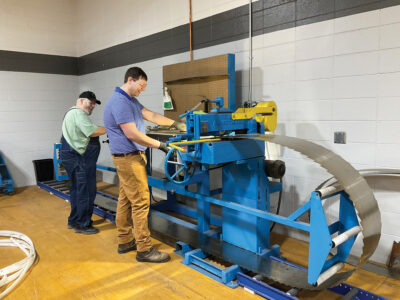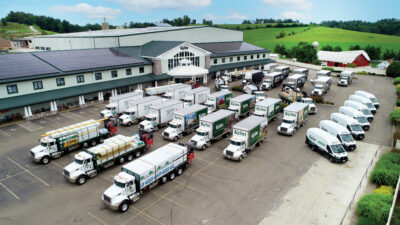
At the time of this writing mortgage rates are still hovering around 6.8 percent, and while housing starts are predicted to jump from 1.42 to 1.44 million units in 2024, the current rates are not spurring an abundance of activity in the U.S. Prices for Western Spruce-Pine-Fir remain soft with mostly hand to mouth ordering. Demand for Cedar is limited to a few items and the lack of fiber will remain problematic moving forward.
The following is what a few West Coast producers had to say:
Dean Garofano of Delta Forestry Group, Pitt Meadows, BC, said, “Delta Cedar Specialties has been off to a good start for 2024. Cedar demand has been good due to the milder winter in most of the U.S.A. and solid repeat program business. Our Hemlock program has been growing with our attention to detail and strong focus on quality, and is attracting a strong following. Our biggest challenge with both species has been the lack of log supply.” Garofano continued, “Unfortunately, we have not been able to meet all our demands due to log shortages. After a slow start to the year due to weather, economic challenges and permit delay issues, loggers have not been able to catch up. These issues along with the restrictive government old growth deferrals have resulted in the coastal log harvest being down 35 percent from five years ago. Sawmills are feeling the contraction, and it is unlikely the harvest will get back to the levels we had five years ago. A very warm winter in B.C. has resulted in an extremely low snowpack which may lead to an early and severe fire season. My fear is just as a consistent volume of logs start to flow to the mills, logging will be halted again due to the warm dry weather. Meanwhile log prices are increasing weekly with limited offers and may continue until the supply catches up. Rail car availability has been an ongoing issue for us trying to get orders out. Each week it is a guessing game to see how many of our ordered cars will arrive with no explanation for the delays.” Garofano finished, “Despite these challenges our sales are doing well, demand for our products is strong and we can feel the market picking up more and more each week. I see prices continuing to rise as we move through the spring market.”
Aiden Coyles of Gilbert Smith Forest Products, Barriere, BC said, “Demand has seen a slight increase as we are heading into the spring, although it is still subdued when looking at a normal year. Six-inch and wider Select Tight Knots is strong, while four-inch is still a challenge to move. Log supply in the interior is looking as though it will be strained in the latter part of the second quarter. I have noticed that prices on some items have risen slightly and customers seem to be happy with more stable demand, despite there being some buyers that we are waiting to get off the fence and commit to their spring buys.” Coyles continued, “Overall a fairly positive outlook. Due to an early break up, there was a slowdown in log deliveries due to unseasonably warm weather. Many mills heading into fire salvage areas will likely further challenge the interior log supply. Labor is always an issue. There is a high risk of fires in BC due to low water tables. We are hoping that a spring spike shows up in the middle of the second quarter, if not it’s going to cause a lot of issues as log supply tightens and log prices rise. We need demand to facilitate a price appreciation on the lumber side of things.”
John McDowell of Oregon Industrial Lumber Products, Springfield, OR, said, “Best way to describe the current market is that there is no urgency on the end-user level, so there is no urgency on distribution, and so on. Fiber is hard to come by with Douglas Fir clears being super tight, especially six-inch. Vertical grain Cedar clears are always difficult to come by and that hasn’t changed, tight knot, lam, and utility are not hot right now, our order file is about 20 percent lower than this time last year, no one is in a rush to spend the cash.” McDowell, continued, “Our biggest challenges remain overhead, which is up 10-20 percent, everything seems to be up, including log costs. We’re hoping things start to pick up with springtime weather and the building season.”









